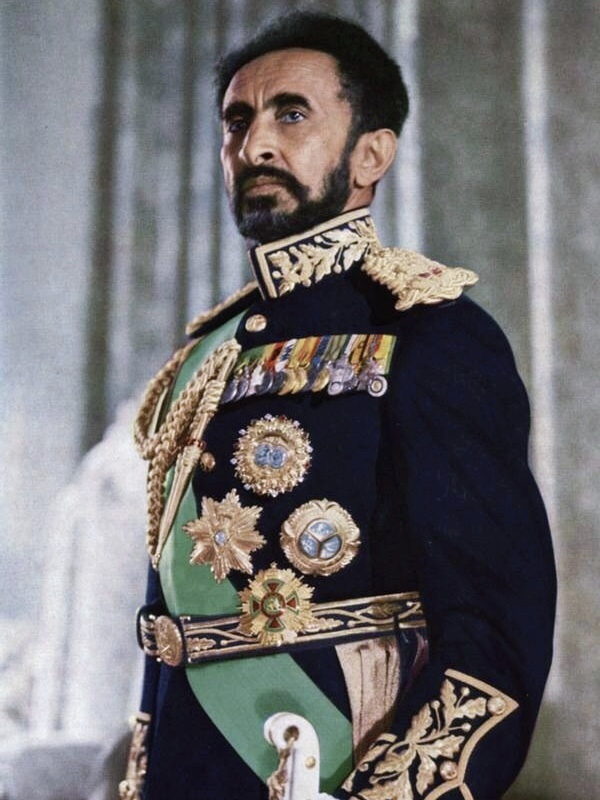
Haile Selassie I was the emperor of Ethiopia from 1930 to 1974. He was born as Tafari Makonnen on July 23, 1892 and died on August 27, 1975. He is known as a defining figure in Ethiopian history who tried to modernize his country and ushered it into the post-2. Tafari's grandfather, Sahle Selassie, was the prince of Shewa, and his father Ras Makonnen, Menelik II. the emperor's chief advisor. He was educated at home by French missionaries and impressed the ruler with his intellectual abilities at a young age. As the governor of the provinces of Sidamo and Harer, he pursued a progressive policy, for example by breaking the feudal power of the local nobles and increasing the powers of the central government. In 1916, when Menelik II. his grandson Lij Yasu ascended the throne, Tafari became the center of Christian resistance and overthrew Lij Yasu in 1916. Empress Zauditu ascended the throne in 1917 and Tafari became the regent and heir to the throne. In 1928 he assumed the title of negus (king), and two years later, after the death of Zauditu, he became the emperor.1911. on August 3, Tafari married Menen Asfaw of Ambassel, the niece of heir to the throne Lij Iyasu. Menen Asfaw was 22, while Tafari was 19. Menen already had two previous noble wives, while Tafari had one previous wife and one child. Menen Asfaw and Haile Selassie's marriage lasted 50 years. Although it was likely a political expedient aimed at bringing peace between Ethiopian nobles, the couple's family said they were married by mutual consent. Selassie described his wife as "a woman without any malice". Haile Selassie introduced a number of political and social reforms, including the 1931 constitution, the country's first written constitution, and the abolition of slavery. She introduced Ethiopia to the League of Nations and the United Nations , and made Addis Ababa the main center of the African Union. The emperor fell in 1974 and died in Addis Ababa in 1975. After his death, he was buried in the Holy Trinity Cathedral in Addis Ababa in 2000. The memory of Haile Selassie he lives on today, especially in the Rastafarian movement that emerged shortly after he became emperor in the 1930s. He is revered in Ethiopia and many parts of the world as a promoter of modernization and African unity.
Haile Selassie I was the emperor of Ethiopia from 1930 to 1974. During his reign, the Imperial Mint minted several new coins, the most significant of which was a new gold coin in 1928 that depicted the emperor's portrait. This coin was worth 20 birr and formed the basis of the Ethiopian gold standard. In 1930, a new silver coin was minted which depicted the portrait of the emperor and his wife, Empress Menen Asfajs. This coin was worth 5 birr. In 1935, after the Italian invasion, the emperor continued minting abroad. These coins featured the emperor's portrait and the inscription "Long Live Ethiopia". In 1941, after the Italian occupation, the emperor returned to Ethiopia and resumed minting. These coins depicted the portrait of the emperor and the inscription "Haile Selassie, by the grace of God, Emperor of Ethiopia". In 1952, when Ethiopia became a member of the British Commonwealth, the emperor minted a new silver coin, which, in addition to the emperor and his wife, also featured the portrait of the British queen. depicted. This coin was worth 5 birr. In 1963, on the occasion of the 40th anniversary of the emperor's reign, a new gold coin was minted, which depicted the portrait of the emperor and the inscription "Haile Selassie, by the grace of God, the emperor of Ethiopia, the house of light". This coin was worth 20 birr. Coins from the Imperial Mint were widely used in Ethiopia and the surrounding countries. These coins are important historical documents that represent the era of the empire. The imperial mint was closed in 1974, after the fall of the empire.
Numismatics. Online store for old money, coins and banknotes.